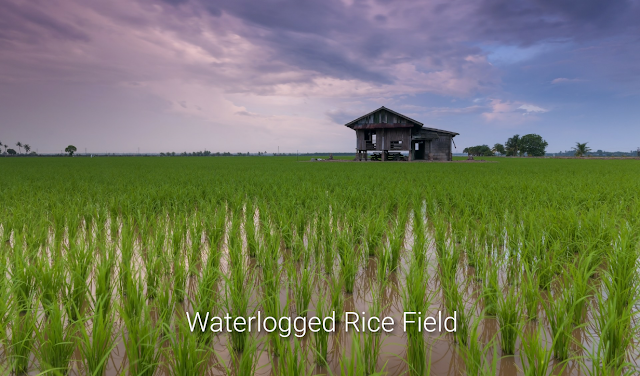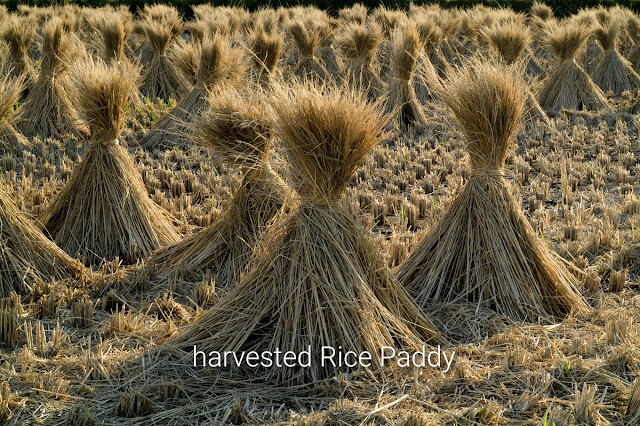Rice is the most food crop for about half of the human race, in particular for the South and East Asia and now spreading to Africa. Nigeria is blessed with suitable ecologies for different rice varieties which when properly harnessed can boost rice production to meet domestic demands. The cultivate able land to rice production covers five major ecologies via upland, lowland or shallow water swamp, irrigated rice, deep water/ floating rice and mangrove. This means rice can be grown in all regions of Nigeria. Potential land area for rice production in the country is 4.9 million hectares but only 3 million hectares is being cultivated.
Prospects of Rice Farming and Production Business in Nigeria
European Association of Agricultural Economics (EAAE) indicates that Nigeria is the largest rice importer in West Africa with an average yearly import of 2 million metric tons since the year 2000. Total consumption stands at 4.4 million metric tons of milled rice Nigeria produces only about2.8 million metric tons. With increase in urbanization and importation of food, many Nigerians have picked up the habit of Rice consumption. The Nigeria population of about 206 million people with annual growth project of 3%, Nigeria present huge market for Rice.
Average production yields are as low as 1.7 metric tons per hectare. Potential yield of rice ranges from upland and lowland varieties is between 3 and 6 tons per hectare.
Federal Government of Nigeria baning importation rice through the land borders and giving import license to few businesses to import through the sea borders present opportunities for local production of rice.
Steps in Starting a Rice Farm in Nigeria
1. Site Selection and Acquisition
Rice is adapted to wide range of environmental conditions from freely drained upland ecology to lowland and deep flood ecologies
Since Rice is known to be water loving, select sites with heavy soil which can hold a lot of water and avoid sandy soils, which are unsuitable for growing rice since they do not retain moisture. Rice is one of crops that do well on swamp/ lowland.
The upland rice is grown as rain-fed crop on naturally well drained soil without surface water accumulation.
Soil: Rice thrives well under good soil condition. Rice requires clay, clay-loam or loamy soils.
2. Rice Variety Selection
Having selected a site and gotten access to land, select rice variety with high optimal yield and suits the soil ecology of your farm.
Select good quality and pure seed from reliable source such as Research Institutes , Seed Companies, accredited agro dealers and ADPs. See reliable sources of crop seeds and seedlings in Nigeria here.
Dress rice seeds with appropriate seed dressing chemicals such as apron star, dress force etc
Make simple seed viability test by planting 100 randomly selected seed and allow for 4-5 days for germination. Do not pant seed with germination rate less than 80%.
There are different rice varieties for low land and upland in Nigeria
Lowland Rice Varieties
Lowland rice is described as either rain-fed or irrigated lowland varieties. Lowland varieties are either direct seeded or transplanted after nursery
The lowland rice varieties available in Nigeria are:
1. Farro 44 (Sipi): It matures between 90 to 100 days and yield range from 4-8 metric per hectare.
2. Farro and 52: It matures between 100 to 120 days and yield range from 4-8 metric tons per hectare.
3. Farro 57: It has the same characteristics with Farro 52.
Upland Varieties
There 5 upland rice varieties in Nigeria.
1. Nerica 1: Matures in 95 to 100 days and yield of 4.5 metric tons per hectare.
2. Nerica 2: It matures in 90 to 95 days and has potential yield of 4 metric tons per hectare.
3. Nerica 4: Matures in 95 to 100 days has potential yield of 4 tons per hectare
4. Nerica 7: Matures in 95 to 100 days and can tied up to 5 metric tons per hectare
5. Nerica 8: It matures in 80 to 85 days and has potential yield of 5 metric tons per hectare
3. Land Preparation
Land for rice cultivation should be fairly levelled to allow even distribution and retention. Use systemic herbicides such as Glyphosate, if the height of the weeds is 25 to 60cm.
Note: Treatment must be done before land preparation
Intensive soil tillage is very important by repeated ploughing, harrowing and trampling to create the puddled condition which involves working up the soil to the consistency of a fine soft mud.
However, the land preparation for lowland rice involves bunding and leveling the field to impound water to permit even flooding.
The land preparation for upland rice is the same as for other rain-fed cereals like millet, maize and sorghum
Prepare basins of 5m by 5m, or make boarders.
Avoid fields with poor drainage.
For Upland rice, tilt the soil properly and pulverize to create uniformity before sowing.
4. Nursery Preparation
You do direct seeding (planting), if you are planting on lowland. But upland requires raising a nursery before transplanting.
For transplanting, seedlings are raised in either a dry or wet nursery. Site nursery beds near the cultivation field as weight of the seedlings is quite cumbersome. The best time for wet season nursery preparation is between April and May depending on the ecology. The best time for dry season nursery preparation is January to February.
Dry Season Nursery
Cultivate the land thoroughly and fertilize with well-rotted farmyard manure. Construct beds 1-1.5m wide and of appropriate length. The beds should be slightly raised. For planting one hectare of field, seedlings are raised in nurseries of about 350-500 sq.m in area. Fertilize adequately before sowing. Pre-seeds are broadcast or drilled (10cm apart) in the prepared nurseries at the rate of 1-2kg per20-35sq.m. The seed is covered with 2-3cm soil. Seedlings from a dry nursery are harder than those from a wet nursery.
Wet Nursery
A wet nursery is the most common method.
Flood the land, puddle and fertilize (farmyard manure).
Nursery beds are made as for dry nursery
They are also slightly raised.
Presoaked, sometimes pre-germinated seeds are broadcast on mud at the rate of 25 kg per 350-500sq.m of nursery beds and water is allowed to stand continuously on the beds after the seedlings are about 15cm high.
Seedlings grow quickly and are ready for transplanting in 25-30 days when they are 15-30cm tall and have developed 5-7 leaves ( depending on the variety).
Sometimes the seeds are germinated on strips of polythene or other materials (impermeable layer such as banana leaves, plastic sheet) which keep the roots system on the surface.
A 20-25m² and bed is enough for 1 hectare.
For either of the systems it’s important to sow thinly as this will encourage sturdy and healthy growth of the seedlings and savings in seeds.
The sown seeds are to be covered with grass mulch and removed on the 7th day after the seedlings must have emerged.
5. Transplanting
After growing the nursery, the next thing is to transplant the rice plants to the rice field.
Transplanting for Lowland and Irrigated Rice
Seedlings should be ready for transplanting 3-4 weeks after planting or at 4-5 leaf stage.
Seedlings should be pulled out carefully, the root washed, tied into bundles before transplanting to the field.
About 3 days before transplanting a Rotavator is used to break the soil into very fine particles.
The soil should be drained to improve aeration.
Plant 2-3 seedlings at each position at spacing of 20cm by 20cm between rows and between plants.
Older seedlings grow slowly you than younger ones and they may result in prolonged maturity, reducing tillering capacity with consequent reduction in yield.
Flood the field with water after transplanting.
Transplanting Upland Rice
Upland rice does not necessarily require nursery. Plant when the rains are established.
Planting methods are broadcasting, dibbling and drilling at d recommended spacing
Upland rice can be planted on flat land or basins.
If you prepared nursery for upland, transplanting is done the same way as in lowland.
6. Integrated Soil Fertility Management
Apply NPK 20:10:10 or NPK 15:15:15 at 4 bags per hectare during planting or transplanting and 2 bags of Urea at 4 weeks after planting or transplanting.
7. Weeding
Yields of rice are seriously reduced by competition from weed during the early stages.
Two hoe or hand weeding 2-3 weeks and 5-6 weeks after sowing or after transplanting will be adequate
Some common Herbicides to use include: Butachlor, Propanil, Ronstar 25 EC,Basagram PL2, Orizoplus2, 4D etc
8. Pests and Diseases Control
The most common diseases of rice plant on farmer’s field are rice blast, bacterial blight
In the case of rice blast, the manipulation of cultural practices like time of planting, spacing and depth of transplanting will reduce incidence; select resistant rice varieties; destroy infected plants.
In case of bacterial blight, avoid flooding on deep water in nursery and spray with appropriate chemicals in both nursery and field.
9. Maturity and Harvesting
Rice is harvested when the panicles have turned yellow, that is before full ripening (about 30-45 days after flowering). Harvest when 80-85% of the grains have turned straw colour to avoid shattering, this is usually about 4-5 weeks after at least 50% flowing. Cut the rice stems with a sickle at about 15-20cm above the ground to permit hand threshing. Tie the panicles in bundles. Then place the tied-up bundles of harvested rice crop in heaps for drying before threshing 80% of the paddy.
Yields range between 1,200 and 3,000kg/ hectare (16-40 bags) for swamp/ lowland rice and 1,000-1,500kg/ hectare (13-20 bags) for upland rice.
With improved practices yield of up to 5,000-6,000 (about 73 bags) and 2,500-3,000kg/ hectare (about 37 bags) of paddy are possible for swam/lowland and upland rice respectively.
10. Storage
Dry the paddy very well before storing. Store rice paddy in a cool, dry and rodent proof condition. Clean the store before putting in your paddy. To protect the paddy against insect pests, use 1 match box of full of Actellic 2-5 dust to about 25kg of paddy. Infested paddy should be fumigated with phostoxin in airtight containers at the rate of one tablet per jute bag (100kg paddy) or 10-15 tablets per ton of paddy.


